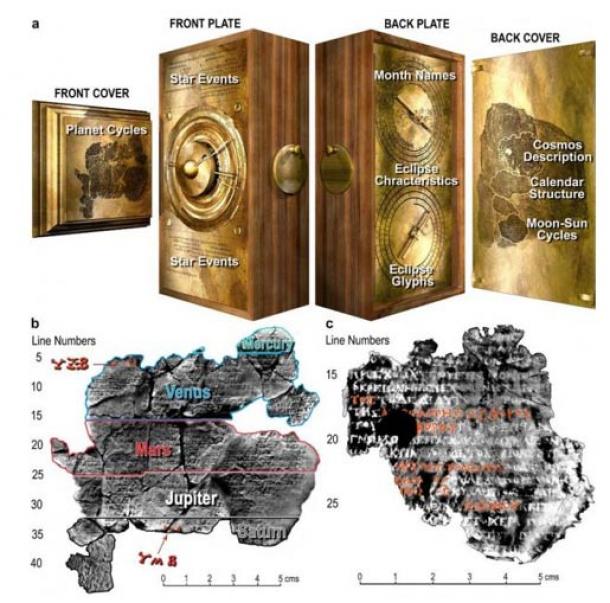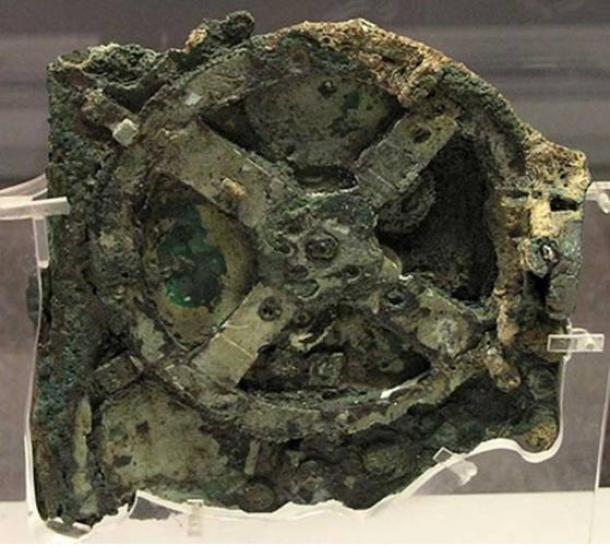University of Glasgow
Techniques developed to analyze ripples in space-time detected by one of the most sensitive scientific devices of the 21st century have helped shed new light on how the oldest known analog computer works.
Astronomers from the University of Glasgow used statistical modelling techniques developed to analyse gravitational waves to establish the likely number of holes in one of the broken rings of the Antikythera Mechanism, an ancient artefact featured in the film. Indiana Jones and the Dial of Destiny.
If the film version allowed the intrepid archaeologist to travel through time, the Glasgow team’s results provide new evidence that one of the components of the Antikythera Mechanism was most likely used to track the Greek lunar year . They also offer new insight into the remarkable craftsmanship of the ancient Greeks.
Discovering the Antikythera Mechanism
The mechanism was discovered in 1901 by divers exploring a shipwreck near the Aegean island of Antikythera. Although the shoebox-sized mechanism had broken into fragments and eroded, it quickly became apparent that it contained a complex series of gears crafted with unusual precision.
Decades of subsequent research and analysis have established that the mechanism dates to the second century BC and functioned as a kind of hand-operated mechanical computer. External dials connected to internal gears allowed users to predict eclipses and calculate the astronomical positions of the planets on any date with an accuracy unmatched by any other known contemporary device.

The inscriptions found on the Antikythera Mechanism led to a number of breakthroughs in the creation of the “theoretically” reconstructed Antikythera Mechanism. (Tony Freeth et al. / Nature)
Reassessment of mechanism specifications
In 2020, new X-ray images of one of the mechanism’s rings, known as the calendar ring, revealed new details about the evenly spaced holes that lie beneath the ring. However, because the ring was broken and incomplete, it was unclear how many holes there originally were. An initial analysis by Antikythera researcher Chris Budiselic and colleagues suggested the number was likely between 347 and 367.
Now, in a new article published in the Watchmaking journalGlasgow researchers describe how they used two statistical analysis techniques to reveal new details about the calendar ring.
They show that the ring is much more likely to have had 354 holes, corresponding to the lunar calendar, than 365 holes, which would have followed the Egyptian calendar. The analysis also shows that 354 holes is hundreds of times more likely than a ring with 360 holes, which previous research had suggested as a possible count.
Professor Graham Woan, from the School of Physics & Astronomy at the University of Glasgow, is one of the authors of the paper. He said: “Towards the end of last year, a colleague showed me data acquired by YouTuber Chris Budiselic, who was looking to create a replica of the calendar ring and was investigating ways to determine the number of holes it contained.
“It seemed like an interesting problem to me, and one that I thought I could solve in a different way over the Christmas holidays. So I started using statistical techniques to answer this question.”

The Antikythera Mechanism (Fragment A – front); the largest gear in the mechanism is visible, about 14 centimetres (5.5 inches) in diameter.CC BY-SA 3.0)
Statistical probability and gravitational waves
Professor Woan used a technique called Bayesian analysis, which uses probability to quantify uncertainty based on incomplete data, to calculate the likely number of holes in the mechanism using the positions of the surviving holes and the locations of the six surviving fragments of the ring. His results showed strong evidence that the mechanism’s calendar ring contained 354 or 355 holes.
At the same time, one of Professor Woan’s colleagues at the university’s Institute of Gravitational Research, Dr Joseph Bayley, had also heard about the problem. He adapted techniques used by his research group to analyze signals picked up by LIGO gravitational wave detectors, which measure the tiny ripples in space-time caused by massive astronomical events like the collision of black holes, when They cross the Earth to examine the calendar ring.
The Markov chain Monte Carlo and nested sampling methods used by Woan and Bayley provided a comprehensive set of probabilistic results, again suggesting that the ring most likely contained 354 or 355 holes in a circle of radius 77.1 mm, with an uncertainty of approximately 1/3 mm. It also reveals that the holes were positioned with precision and extraordinary accuracy, with an average radial variation of just 0.028mm between each hole.
Bayley, co-author of the study, is a research associate in the School of Physics and Astronomy. He stated :
“Previous studies had suggested that the calendar ring likely followed the lunar calendar, but the two techniques we applied in this work significantly increase the likelihood that this is the case.
It gave me a new appreciation of the Antikythera Mechanism and the work and care that Greek craftsmen put into making it – the precision of the positioning of the holes would have required very precise measuring techniques and an incredibly steady hand to drill them.”
Professor Woan added:
“It’s a neat symmetry that we’ve adapted the techniques we use to study the universe today to better understand a mechanism that helped people track the skies almost two millennia ago.
We hope that our discoveries about the Antikythera Mechanism, while less supernaturally spectacular than those made by Indiana Jones, will contribute to deepening our understanding of how this remarkable device was made and used by the Greeks.
The paper, titled “An Improved Calendar Ring Hole Count for the Antikythera Mechanism: A New Analysis,” is published in Watchmaking Journal.
Top image: Antikythera Mechanism on display at the National Archaeological Museum in Athens. Source: Joyofmuseums/CC BY-SA 4.0
This article was first published under the title “Gravitational wave researchers shed new light on the Antikythera mechanismand has been slightly modified, with an Americanized spelling.
Publish as AO